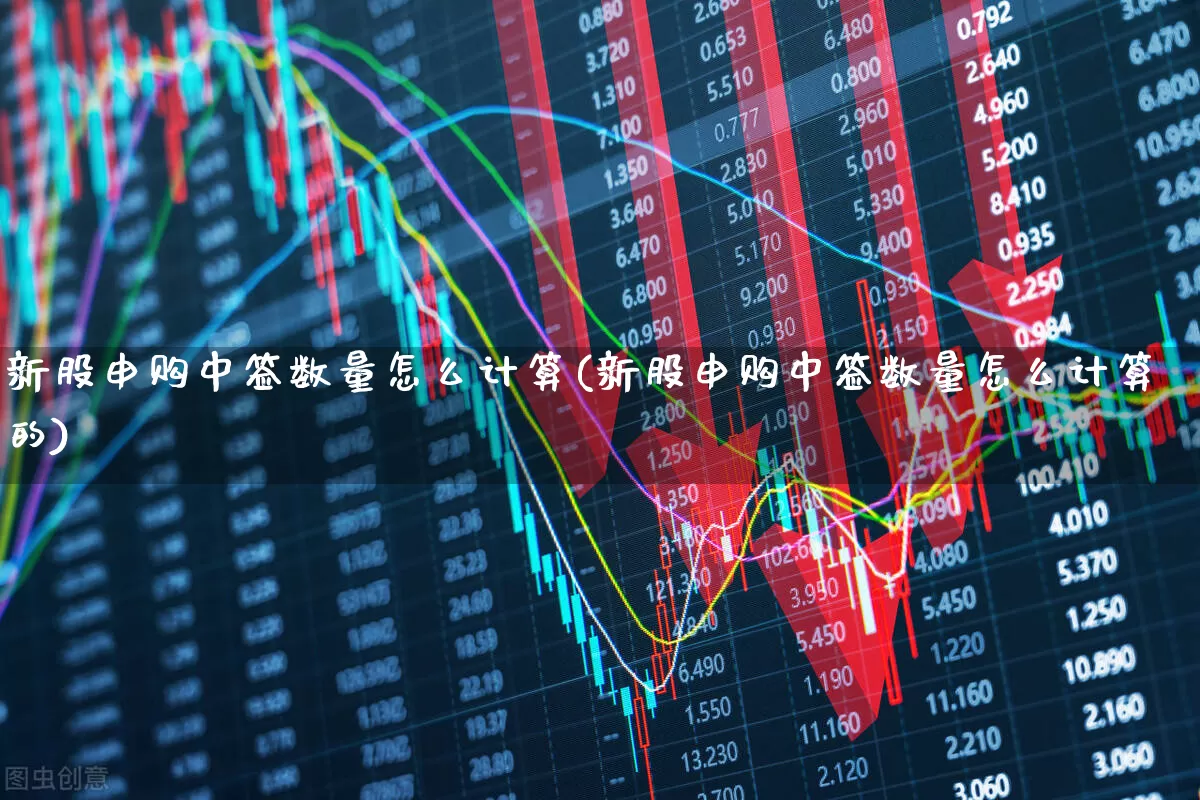新股申购中签数量怎么计算(新股申购中签数量怎么计算的)
新股申购中签数量怎么计算
新股申购中签数量是指投资者在新股发行过程中获得的股票数量。在中国,新股申购常常受到投资者的关注,因为新股往往具有较高的上市溢价和投资机会。了解如何计算新股申购中签数量对于投资者来说是十分重要的。
首先,我们需要明确一些基本概念。在新股发行过程中,发行商往往会确定一定的发行数量,这通常是根据公司估值、市场需求和股票发行价格等因素来确定的。同时,发行商也会设定一定的发行规模,即每个投资者可以申购的最大股票数量。
在新股申购过程中,投资者通常需要提前通过证券账户向券商提交申购订单,并在规定的时间内缴纳相应的申购资金。一旦申购结束,发行商会根据投资者的申购数量和股票发行规模来计算每个投资者的中签数量。
中签数量的计算通常遵循以下原则:
1. 申购数量不超过发行规模:投资者的申购数量不能超过发行规模,否则将无法参与中签计算。例如,如果某只新股的发行规模为1000万股,而投资者申购了200万股,那么其最终中签数量也不会超过1000万股。
2. 申购数量与中签率成正比:通常情况下,中签率越高,投资者的中签数量也会越多。中签率是指投资者成功中签的概率,通常以百分比来表示。例如,如果某只新股的中签率为10%,投资者申购了1000股,那么其最终中签数量有可能为100股。

3. 采用摇号方式确定中签结果:在申购结束后,发行商会采用摇号方式来确定投资者的中签结果。摇号过程是随机的,确保了公平性和公正性。投资者的申购数量越多,中签的可能性也就越大。
需要注意的是,中签数量的计算也可能受到一些特殊情况的影响。例如,一些新股发行可能会对不同类型的投资者设置不同的中签规则,如对机构投资者和个人投资者分别设定不同的中签率。此外,一些新股发行可能会根据投资者的申购资金量来确定中签数量,通常是按比例分配。
总之,新股申购中签数量的计算是一个相对复杂的过程,涉及到发行规模、申购数量、中签率以及摇号等多个因素。对于投资者来说,了解如何计算中签数量是非常重要的,可以帮助他们更好地参与新股申购,提高投资成功的机会。
【参考译文】
How to Calculate the Allotment Quantity for New Stock Subscription
The allotment quantity for new stock subscription refers to the number of shares obtained by investors during the new stock issuance process. In China, new stock subscriptions often attract investors\' attention due to the higher listing premium and investment opportunities associated with new stocks. It is important for investors to understand how to calculate the allotment quantity for new stock subscriptions.
Firstly, we need to clarify some basic concepts. During the new stock issuance process, the issuer often determines a certain issuance quantity based on factors such as company valuation, market demand, and stock issuance price. At the same time, the issuer also sets a certain issuance scale, which is the maximum number of shares that each investor can subscribe for.
During the new stock subscription process, investors usually need to submit subscription orders to the brokerage firm in advance through their securities accounts and pay the corresponding subscription funds within the specified time frame. Once the subscription is closed, the issuer will calculate each investor\'s allotment quantity based on their subscription quantity and the stock issuance scale.
The calculation of the allotment quantity generally follows the following principles:
1. The subscription quantity does not exceed the issuance scale: Investors\' subscription quantity cannot exceed the issuance scale, otherwise they will not be eligible for the allotment calculation. For example, if the issuance scale of a new stock is 10 million shares and an investor subscribes for 2 million shares, the final allotment quantity will not exceed 10 million shares.
2. The subscription quantity is proportional to the allotment rate: Generally, the higher the allotment rate, the larger the allotment quantity for investors. The allotment rate refers to the probability of successful allotment for investors and is usually expressed as a percentage. For example, if the allotment rate for a new stock is 10% and an investor subscribes for 1,000 shares, the final allotment quantity could be 100 shares.
3. Allotment results are determined by a lottery: After the subscription is closed, the issuer will use a lottery to determine the allotment results for investors. The lottery process is random, ensuring fairness and impartiality. The more shares an investor subscribes for, the higher the probability of allotment.
It should be noted that the calculation of the allotment quantity may also be affected by some special circumstances. For example, some new stock issuances may set different allotment rules for different types of investors, such as different allotment rates for institutional investors and individual investors. Additionally, some new stock issuances may determine the allotment quantity based on the amount of subscription funds, usually distributed proportionally.
In conclusion, the calculation of the allotment quantity for new stock subscriptions is a relatively complex process involving factors such as issuance scale, subscription quantity, allotment rate, and lottery. For investors, understanding how to calculate the allotment quantity is crucial as it can help them better participate in new stock subscriptions and increase their chances of investment success.



